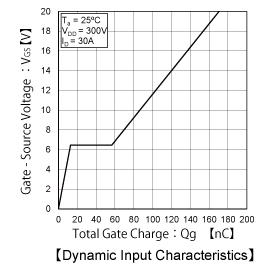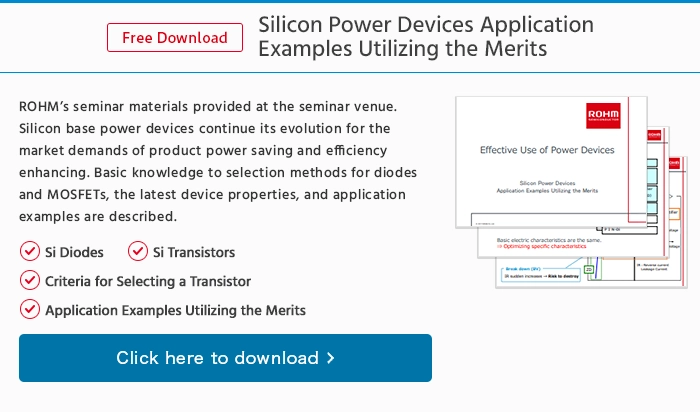tr_what10
Total Gate Charge
What is Total Gate Charge (Qg)?
The Total Gate Charge (Qg) is the amount of charge that needs to be injected into the gate electrode to turn ON (drive) the MOSFET.
The unit of Qg is the Coulomb (C), and if the total gate charge is large, it will take time to charge the capacitor necessary for turning ON the MOSFET, increasing switching loss. The smaller this value, the lower the switching loss and the higher the switching speed that can be achieved.
Total Gate Charge and ON Resistance
As mentioned earlier, the smaller the Gate Charge the lower the switching loss. Also, the smaller the ON Resistance, the lower the power dissipation during operation.
However, the characteristics for Total Gate Charge and ON Resistance are in a trade-off relationship.
Generally, the smaller the chip size (surface area) of the MOSFET the smaller total charge but the ON resistance will increase.
In other words, there is a conflicting relationship between switching loss and power loss during operation.
Dynamic Input Characteristics

The figure shows an example of the dynamic input characteristics (Qg-VGS).
In the figure, the drain side supply voltage (VDD) and drain current (ID) are fixed, and the minimum amount of charge necessary for ID=30A (VDD=300V) current to flow is 60nC. At this time, the Gate-Source voltage (VGS) is 6.5V.
Actually, in a state where MOSFET switching can be completely turned ON, the ON resistance which is in a reciprocal relationship is adjusted and the gate voltage (VGS) set.
In this case, the total gate charge (Qg) can be read from the graph of the set voltage (e.g. 85nC at VGS=10V, 130nC at VGS=15V).
electronics_tips_menu





